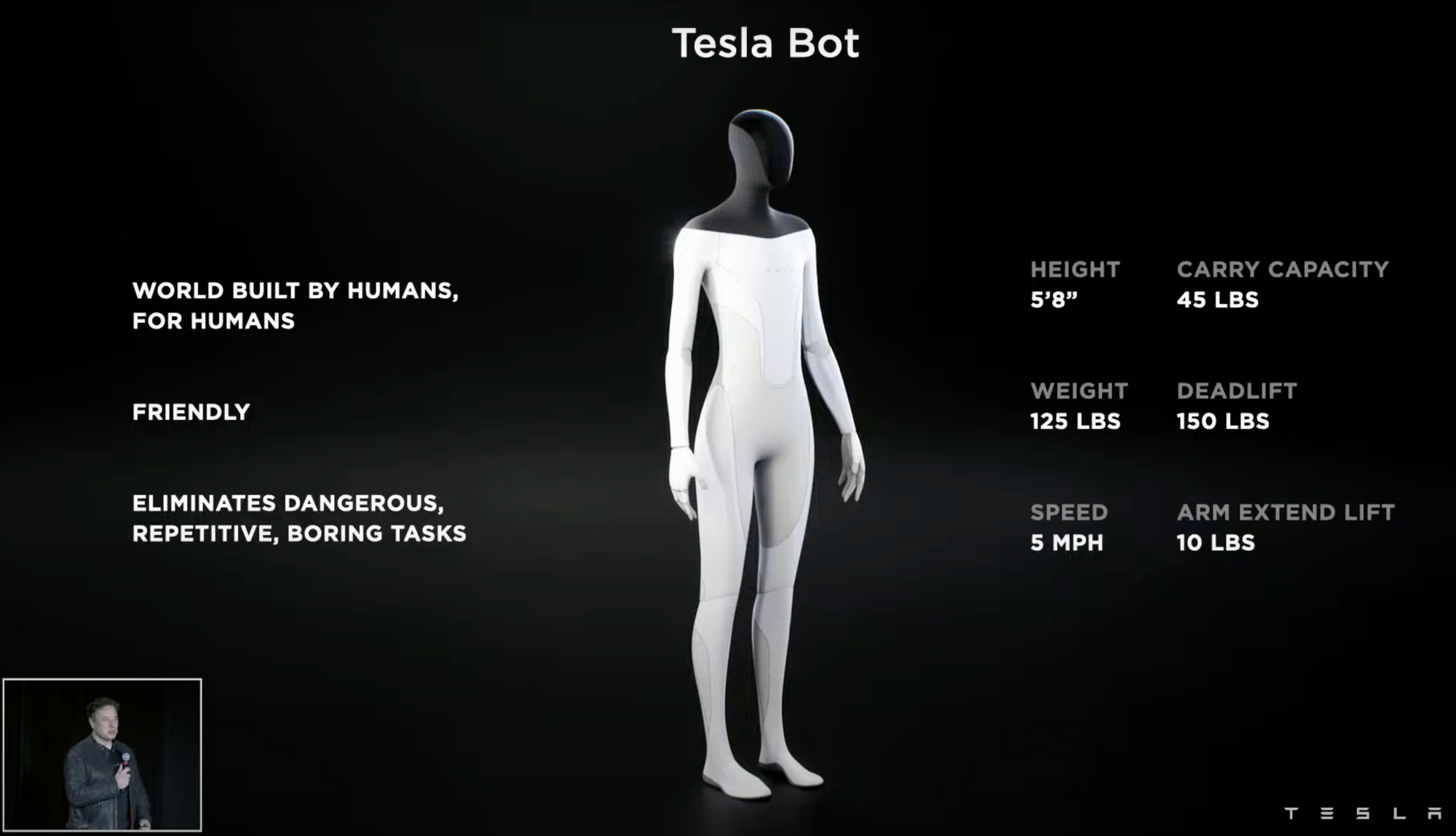6 Reasons Why the Tesla Bot Looks Like a Human.

If you build robots, you have all the freedom of design - you can create the most efficient form factor for the task the robot is designed for. Looking at the current robotics landscape shows that form factors are designed around the robot's task. Take vacuum robots or warehouse robots that help to move goods as an example. Tesla is already building a driving robot that is designed to move people from a to b. It's basically all their cars with FSD equipment, but why did they choose the human form factor for the next Tesla robot? Here are 6 reasons for this decision.
- Attracting the most talented people. What would you rather work on if you were a talented A.I. or Robotics expert interested in real-world applications? A warehouse robot that moves goods, the next version of a vacuum robot? Obviously, a robot version of yourself might be one of the most exciting challenges to work on.
- Variety of applications. We build the society around us, humans. Roads, buildings, tools - most of the stuff that we created is made for us. So if you want to create a robot capable of helping with most things, it's probably a good idea to create a robot that can move and interact with the environment the same way we humans do.
- Universal Solution. If you want to solve real-world A.I. for whatever reason motivates you, there are different approaches. First, start with very specialized niche use-cases, find a narrow solution, and iterate from there. The time to market is probably fast, but the solution might not be transferable to other use-cases. The other extreme would be to start with the most complex problem and find a solution that might take a very long time, but once you solved the problem, you can apply the same solution to other use-cases. The leverage you have to find the universal solution might be worth the extra effort.
- Training data. The software that allows the Tesla Car to drive itself was trained by all the human Tesla drivers. The same approach can be used for other real-world A.I. applications. Humans are good at teaching other humans how to do stuff. If the Tesla bot had 4 arms, 3 fingers per hand, or generally more or fewer capabilities, teaching and sharing knowledge would be more difficult. With the humanoid design, the robot might just observe its human friend doing stuff and learn by observation.
- Further Mission. Tesla already has positioned itself on a good trajectory to ensure the transition to sustainable energy. The Tesla bot could help accomplish this mission by decreasing manufacturing costs and making sustainable technology more affordable. Keep in mind that Elon Musk has overarching goals with all his ventures. One of them is to colonize Mars, which might be the most exciting and dangerous mission of our lifetime. To accomplish this goal, a humanoid robot could be a key ingredient for building the infrastructure required to have humans living there.
- Setting the standard. Elon has been publicly mentioning the thread of A.I. for humanity. Being the first one to build real-world A.I. at scale may allow Tesla to set a standard for building these robots. The competition will automatically be compared to the Tesla standard, and they might have difficulty building a "more dangerous" version.
